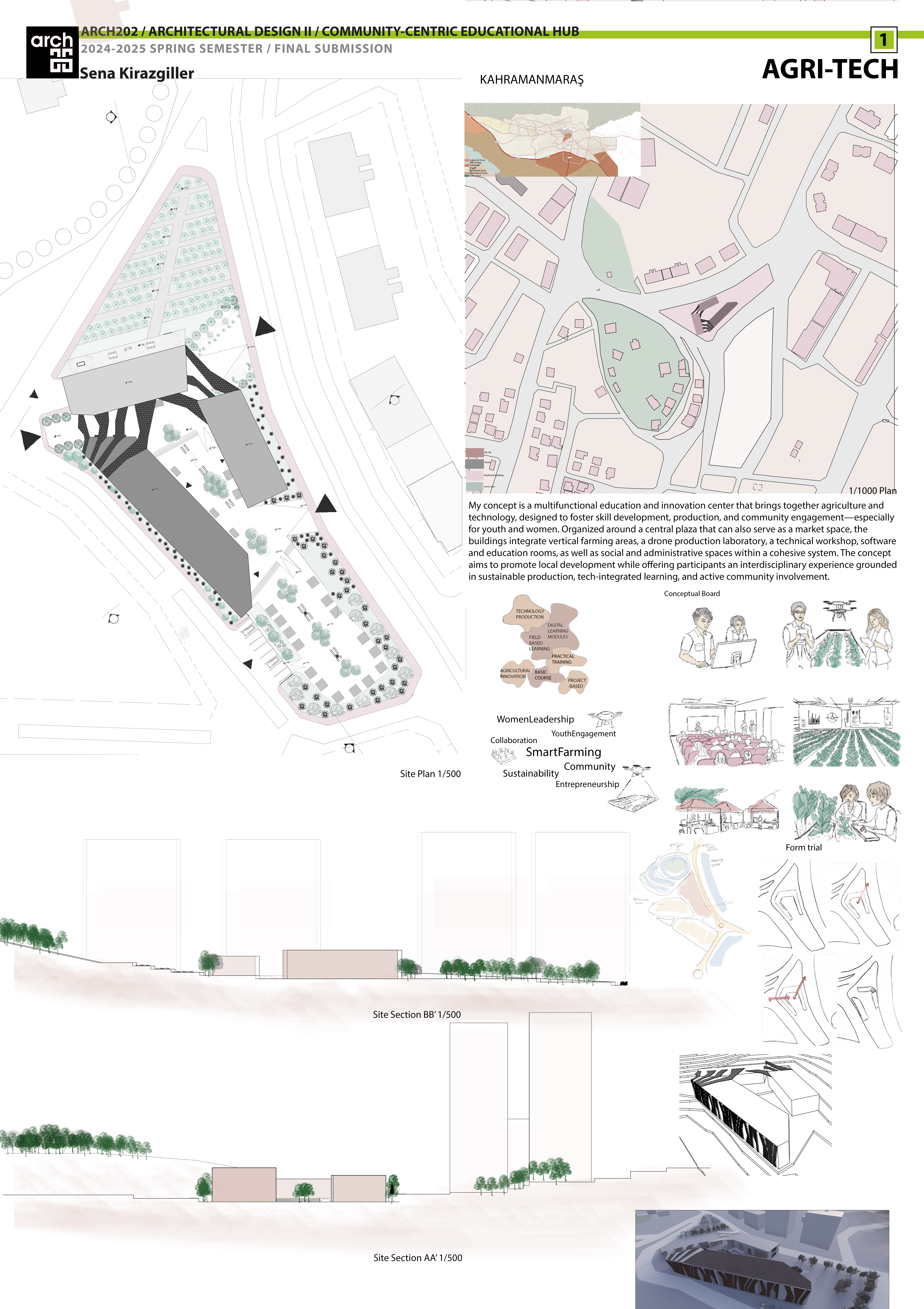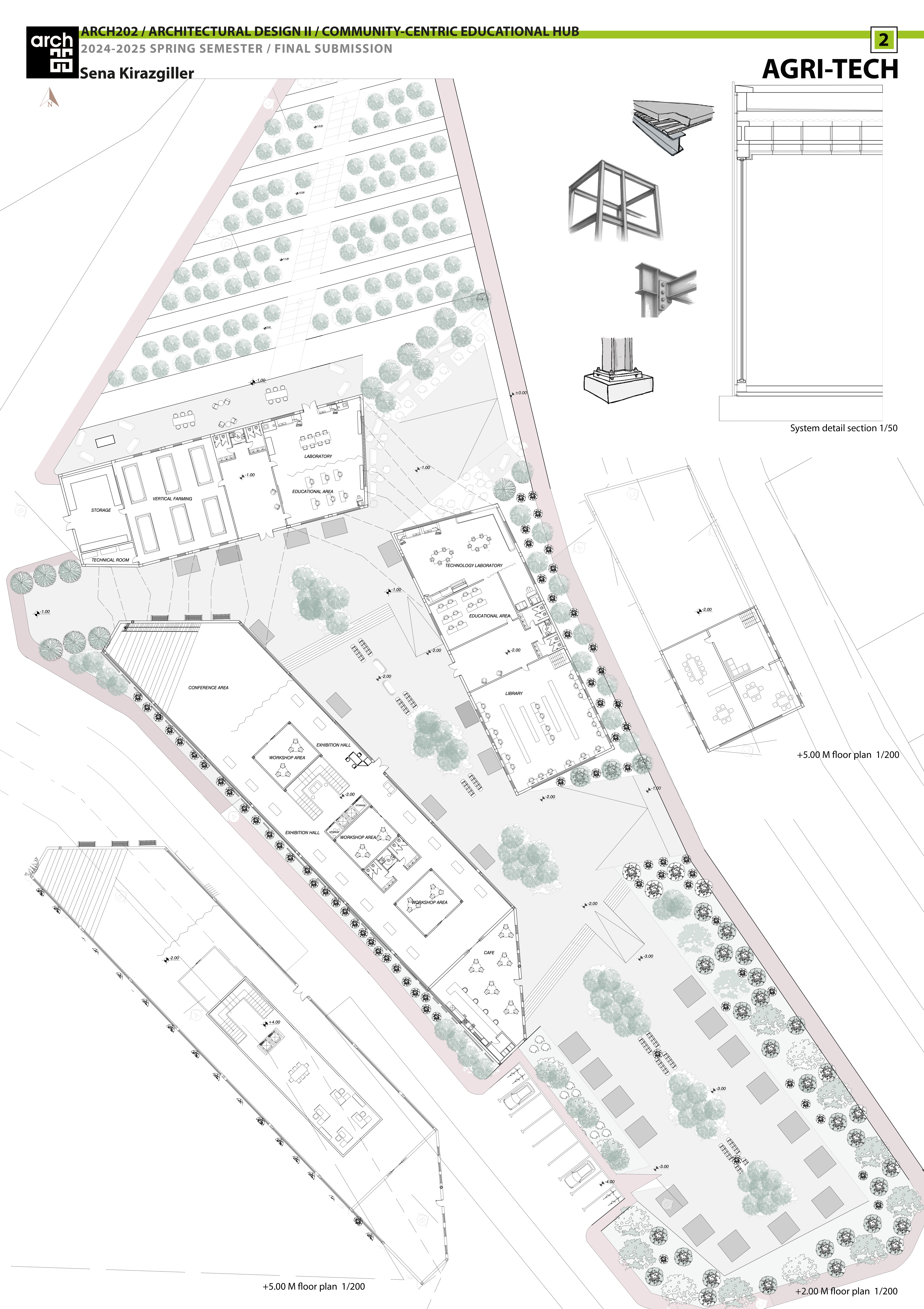This project proposes a multifunctional education and innovation center at the intersection of agriculture and technology in the industrial-agricultural fringe of Kahramanmaraş. Designed as a catalyst for local empowerment, community learning, and sustainable production, it focuses particularly on engaging young people and women in the region.
The project is centered around a central plaza, a flexible open space that serves as both a public market and gathering point, forming the heart of the complex. Surrounding this square are interconnected buildings housing vertical farming modules, a drone production and testing laboratory, technical and digital workshops, classrooms, administrative, and shared spaces. The design encourages participants to engage in interdisciplinary collaboration by blending learning and production, theory and practice.
Programmatically, the center hosts digital learning modules, project-based agricultural innovation, and technical training tailored to current regional needs. By creating a platform for smart agriculture, entrepreneurship, and sustainability, it promotes self-sufficiency and technological literacy in the agricultural sector.
Architecturally, the structural system is open and modular, enabling phased growth and adaptability. Materials have been selected to reflect environmental sensitivity; green spaces, ventilation strategies, and productive facades enhance both ecological performance and community well-being. The spatial character blends lightness with clarity; transparent facades, covered walkways, and green corridors create openness, accessibility, and a sense of collective ownership.
Located near an industrial zone and a university, the site offers strategic access to existing knowledge, production, and logistics networks. The design responds sensitively to urban edge conditions, incorporating pedestrian access, road infrastructure, and landscape transitions between the city and agriculture.
In conclusion, this AGRI-TECH center is more than an educational space; it is a living infrastructure for local development. By integrating agriculture, technology, and social participation within an adaptable architectural framework, it promotes resilience, creativity, and inclusive growth, fostering a community capable of shaping its own future.



